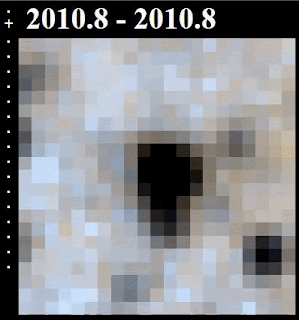NASA Volunteer Arttu Sainio saw the star Asassn-21qj brightening, possibly due to crashing planets. Credit: Dan Caselden, NASA
Astronomers found what looks like a
glowing cloud of dust from a massive planetary pile-up—and NASA volunteers
helped make the discovery! A recent paper
in Nature describes
how an international group of professional and amateur astronomers teamed up to
measure the heat glow of two ice giant planets colliding and see the
resultant dust cloud moving in front of the parent star several years later.
The
story began back in 2021, when the All-Sky Automated Survey
for Supernovae (ASAS-SN) network noticed that a Sun-like star 1800 light years
away was rapidly
fading. Some 30
days later, NASA volunteer Arttu Sainio was reading X (formerly Twitter), and caught professional astronomers
Dr. Matthew Kenworthy and Dr. Eric Mamajek speculating about this weird event.
Arttu decided to further investigate this star, called
Asassn-21qj, on his own, using data from NASA’s NEOWISE mission. Arttu was surprised to find that the
star had demonstrated an unexpected brightening in infrared
light two years before the optical dimming event. So
he joined the talk on social media and shared his finding with the two
astronomers.
“Out of the blue, amateur
astronomer Arttu Sainio on social media pointed out that the star brightened up
in the infrared over a thousand days before the optical fading,” said
Kenworthy. “I knew then that this was an unusual event.”
More contributions from amateurs
helped determine the nature of the star. Amateur spectroscopist Hamish Barker
tried to capture a spectrum of Asassn-21qj in late July, 2022. A spectrum
spreads out the colors of the starlight, revealing the star’s temperature.
However, the star turned out to be too dim, so Hamish asked Olivier Garde from
a French amateur astronomy team if they could add ASASSN-21q to their target
list. The team, called the Southern Spectroscopic project Observatory Team
(or “2SPOT”), succeeded in collecting the needed spectrum in early
September, 2022 and forwarded it Kenworthy. The 2SPOT team
members are Stéphane Charbonnel, Pascal Le Dû, Olivier Garde, Lionel
Mulato and Thomas Petit.
Two more amateur astronomers also
independently observed the star and contributed their data to the study.
Amateur spectroscopist Sean Curry
provided a spectrum of Asassn-21qj in early April, 2023. Dr.
Franz-Josef (Josch) Hambsch followed the star from his remote observatory ROAD
(Remote Observatory Atacama Desert). He submitted his results via the American
Association of Variable Star Observers (AAVSO) database.
Want to help find more objects like
Asassn-21qj? Help the Disk Detective project search for more exotic clouds of dust around nearby
stars---or try the Backyard Worlds: Planet 9 project, where Sainio learned some of his
skills. "Thanks to working previously with Backyard Worlds,
retrieving WISE timeline photometry from NASA's infrared archive (IRSA)
was a logical step for me,” said Sainio.
Congratulations to all the researchers who collaborated on this study!
Source: Amateur Astronomers Help Discover Cosmic Crash - NASA Science

No comments:
Post a Comment